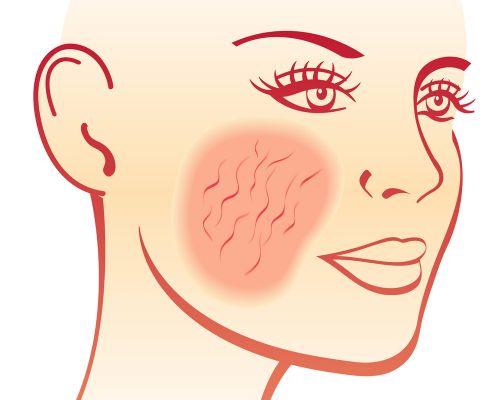Couperose/rosacea
Skin diseases in adults
Rosacea is one of the most common skin diseases in adulthood and usually begins between the ages of 30 and 50. It is characterized by capillary dilatation and is chronically inflammatory. It is not uncommon for it to be accompanied by redness, pain, burning and nodule formation in the affected skin areas.
Forms of rosacea and origin
- Rosacea telangiektatika: Couperose (rosacea telangiektatika) is a form of rosacea. It begins with vasodilatation, which shows up as reddening, especially on the nose and cheeks. If there is congestion in the fine capillary vessels, this leads to permanent vasodilatation and also to the formation of new vessels.
- Rosacea papulopustulosa: This is a form of rosacea in which there can be inflammation of the sebaceous glands, which can be seen as inflammatory pustules or papules. In addition, the enlarged veins cause severe redness.
Diagnosis
The clinical picture is often sufficient to diagnose rosacea. In early stages, the dermatoscope can enlarge the skin and thus the capillary vessels and make early forms visible.
Therapy
In our dermatology practice, we use the following procedures to treat rosacea:
- Laser treatment to remove pathologically dilated capillaries
- Lymphatic drainage
- Oxygen Treatment
- Fruit Acid Peelings
- Microneedling
- Mesotherapy
- Coordinated home care
Adjusting your lifestyle
If rosacea has already been diagnosed, it is important to avoid various factors that can lead to a deterioration. This includes, for example:
- Alcohol and coffee
- Spicy dishes
- Nicotine
- Strong sun exposure and solarium
- Sauna and steam baths
- Mechanical peels or brush treatments
Further information
Detailed information on rosacea and treatment can be found in the Dermasthetics Institute blog at: What is Rosacea and how is Rosacea treated?







